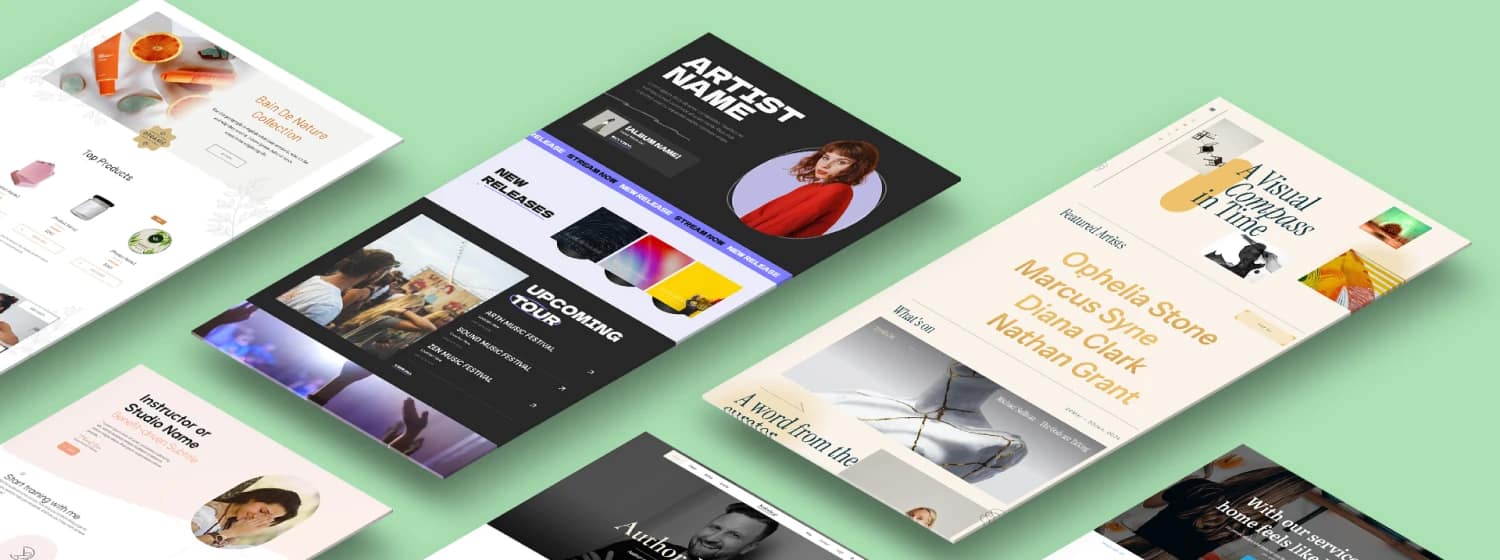So You're Paying for Clicks... But Are They Actually Doing Anything?
Moment of honesty: PPC isn’t my favorite thing to work on. But when you’re a DIY entrepreneur trying to get results fast, it’s a necessary part of the game.
You spend hours crafting the perfect ad—the hook. You tweak the copy, you target the audience, you launch the campaign, and you see the clicks roll in. But then... nothing.
I’ve been there. My first successful ad campaign was a traffic machine and a conversion wasteland. I had a great hook, but I’d forgotten to attach it to the line. I sent all that glorious, expensive traffic to a homepage that didn't continue the conversation the ad had started.
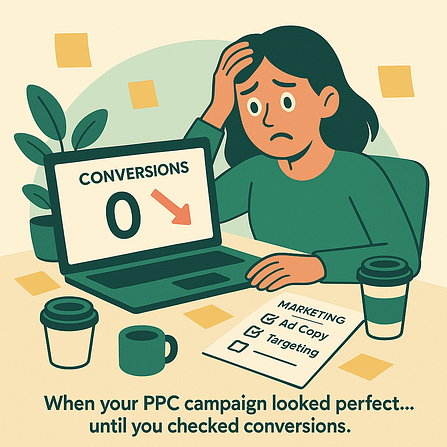
This disconnect is called a message mismatch. It’s the silent killer of countless PPC campaigns and the #1 reason entrepreneurs feel like they're "wasting money on ads." It’s why PPC landing pages see a bounce rate between 70-90%.
But fixing it is your single biggest opportunity. According to a case study by Moz, achieving proper message match can lift conversion rates by over 200%.
This guide will give you the step-by-step blueprint to build a PPC landing page that works, built around this core principle. We're not just going to talk theory; we're going to build.
A Note from Chipo
After a decade of building websites and running marketing campaigns, the single biggest lesson I've learned is that a broken promise between your ad and your page is the fastest way to waste money. This guide is built on that hard-won experience to help you get it right the first time.
Step 1: Your Blueprint — Nailing Message Match Before You Build
Before you open a page builder, you need a plan. For a PPC landing page, that plan is all about aligning your ad (the hook) with your page (the line).
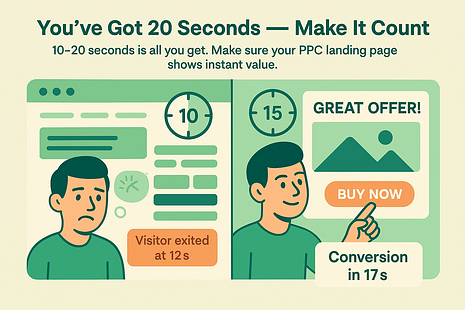
Grab your ad copy (if you need help with this, here's our guide to writing copy). Let's define the three critical connections.
With these three points aligned, you have the foundation for a page that converts.
Step 2: The Build — Assembling Your High-Converting PPC Landing Page
A PPC landing page has one job: convert the visitor from that specific ad. That means no distractions. No main navigation. No footer full of links. Just a single, focused path to the goal.
While these tactics are specific to PPC, they are built on the core principles of all high-converting landing pages, so if you haven't already, check it out.
Here’s how to structure your page using a tool like Thrive Architect, which is designed for this kind of focused, conversion-driven page building.
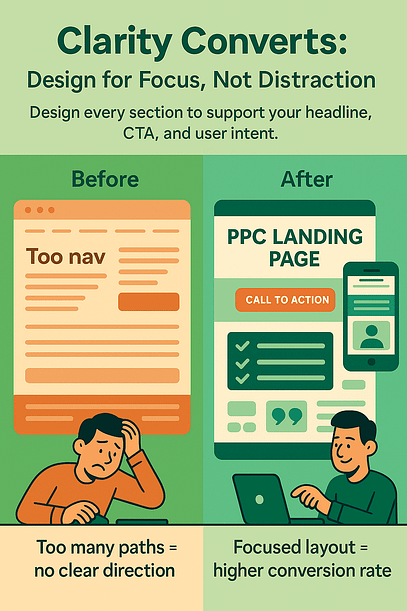
The Hero Section: The Instant Confirmation
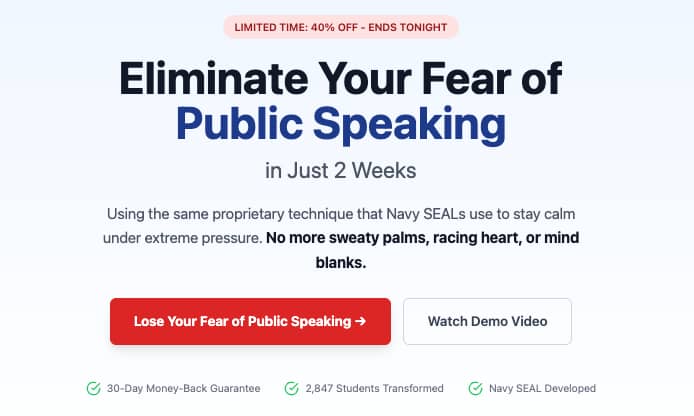
This is the first thing a visitor sees. It must immediately confirm they're in the right place.
The Body Copy: The Promise Expansion
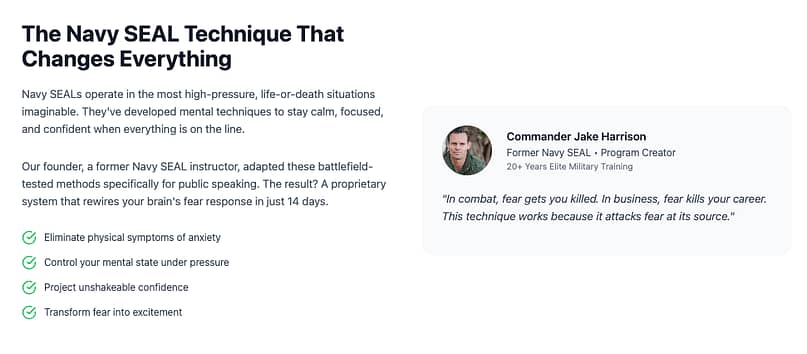
Your ad made a promise; this section briefly expands on it.
Pro-Tip
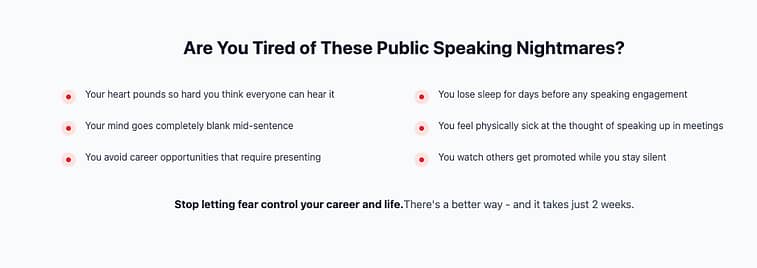
You can also use this section to agitate the problem - a highly successful tactic from the PAS copywriting formula. This is where you take the reader's problem and show how it's negatively impacting them, setting you up to provide the solution.
The Proof Section: The Trust Builder
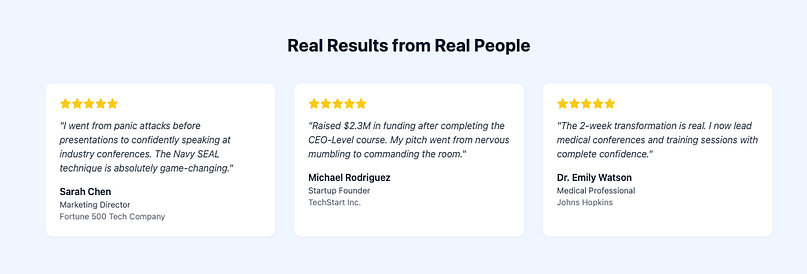
Visitors from cold traffic are skeptical. Show them that others have trusted you and gotten results.
The CTA Section: The Final Ask
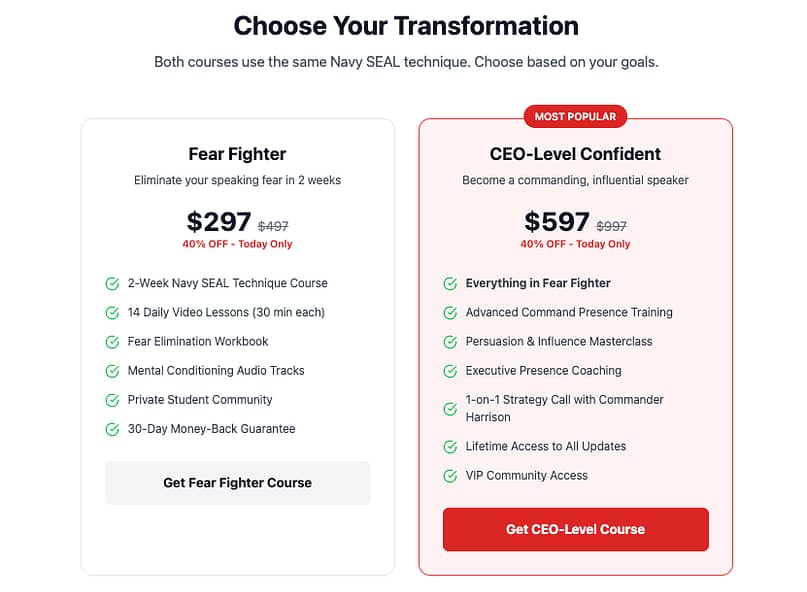
This is the finish line. Make it impossible to miss.
Pro-Tip
Use first-person language in your button copy. "Get My Free Guide" often outperforms "Get Your Free Guide" because it puts the user in the driver's seat and makes the action feel more personal and immediate.
Putting It All Together: The Anatomy of a Perfect PPC Page
Here’s how the sections you just built flow together to guide your visitor from click to conversion, explaining the psychology behind each step.
Step 3: The Financial Impact — Why Message Match Saves You Money
For a DIY entrepreneur, every dollar counts. Ignoring message match doesn't just hurt your conversion rates; it actively makes your ads more expensive. Google rewards advertisers who provide a great, relevant user experience.
A strong message match directly improves your Landing Page Experience, which is a key component of your Google Ads Quality Score. A better Quality Score isn't just a vanity metric; it has a direct financial impact:
Building a message-matched landing page is the most direct way to lower your advertising costs and maximize the return on every dollar you spend.
Step 4: The Amplifier — Advanced Tactics to Maximize Conversions
With the core page built, you can now add advanced layers to boost performance even further.
Engage and Segment with a Quiz
Tired of wasting money on clicks from unqualified leads? A quiz is the perfect filter.
Add Ethical Urgency
Urgency, when it's authentic, is a powerful motivator.
Step 5: The Proof — How to Test Your Page (and Stop Guessing)
Your first build is just your best guess. The only way to truly optimize your ad spend is to test. Remember, even this blueprint is a starting point. The goal isn't to get it perfect on the first try, but to have a solid baseline to test and improve upon. Every audience is unique, and only data can tell you what truly works for them.
Frequently Asked Questions
Ideally, you should have one unique landing page for each ad group. This allows you to achieve perfect message match for each specific keyword and ad. However, for a DIY entrepreneur, that can be overwhelming. Start by creating one master landing page for your main campaign. Then, use a tool like Thrive Architect to quickly duplicate and tweak it for your top 2-3 ad groups.
While the average landing page conversion rate is around 6.6%, this number can be misleading. It varies wildly by industry. The most important metric isn't how you compare to others, but your own improvement over time. Focus on testing and beating your own benchmark.
No. Absolutely not. A PPC landing page has one goal. A navigation menu provides multiple escape routes that pull visitors away from that goal. Removing all navigation is one of the quickest ways to increase focus and boost conversions.
As long as it needs to be to make the sale, and not a word longer. For PPC traffic, shorter is often better. The ad did the initial work of getting the click. The landing page's job is to confirm the promise and guide the visitor to the CTA with as little friction as possible. Provide just enough information to build trust and justify the click, but don't overwhelm them with details.
Conclusion: Stop Wasting Clicks
Every click you pay for is a promise. Your ad is the hook; your landing page is the line. If they aren't connected, the promise is broken, and your investment is wasted.
You now have a complete, step-by-step blueprint to build a landing page that keeps that promise. You know how to plan your page, build the core components, understand the financial impact, and test your results. You have a system for turning cold traffic into a predictable, profitable conversion machine.
Ready to build landing pages that make every click count?
👉 Get started with Thrive Suite — it includes Thrive Architect, Thrive Quiz Builder, Thrive Ultimatum, and Thrive Optimize, giving you all the tools you need to build and perfect every step of your PPC funnel with confidence.

